Insight
Published and updated
Evolution of Two-Way Radio & Wireless Communication
Today, it’s easy to take wireless communication for granted. Most of us are attached to our cell phones and have never known life without the radio. Have you ever asked yourself how we got here? It’s been a long road to today’s world of two-way wireless communication. Let’s take a trip through history and see how the we got here!
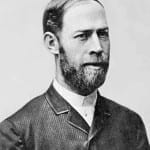
1885 — German physicist Henrich Hertz proved that energy could be transmitted through electro-magnetic waves. Hertz initially wrote off his work as having no practical use. As further proof that his discovery was significant, frequency measurement was given and still carries his name, the ‘Hertz’.
1891 — Maritime safety saw a huge improvement when what we know as wireless telegraphs began to appear on board ships.
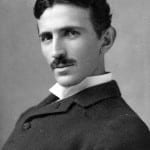
1893 — Determined to prove that electromagnetic energy could be transmitted wirelessly, Nikola Tesla provided the first public demonstration of radio to public onlookers in St. Louis, Missouri. Tesla would continue to innovate in the field, developing the “Tesla Coil” widely used in radios.
1897 — Guglielmo Marconi, an Italian inventor, files for patent protection and establishes the Wireless Telegraph Signal Company.
1899 — A marquee safety moment for wireless communication. R.F. Matthews used a system developed by Marconi to signal the need for emergency assistance.
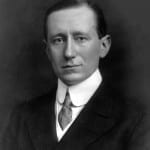
1901 — Marconi made history by sending a transatlantic message from Ireland to Canada.
1902 — Scientific American published “How to Construct an Efficient Wireless Telegraphy Apparatus at a Small Cost.”
1906 — A great year for music! Canadian Reginald Fessenden overcame initial failure to transmit speech and music. Fessenden used Ernest Alexanderson’s alternator to transmit voice long range from Brant Rock, MA.
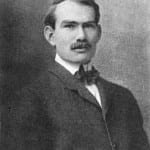
1906 — The “father of American radio” and a direct competitor of Marconi, Lee DeForest introduced the “Audion Vacuum Tube.” This device was a heavy amplifier of radio signals and made a huge contribution to the industry. The lead scientist of American Wireless Telephone and Telegraph, DeForest would go on to hold over 300 patents.
1910 — Aviation professionals Fredrick Baldwin and John McCurdy demonstrated what became a booming connection for the industry. Using a bi-plane, the two trailed an aerial demonstrating radio’s use in the skies.
1912 — Regulation entered the picture. Amateurs on the airwaves were required to be licensed, and ships with radios had to have trained radio operators.
In the infamous year of the Titanic’s sinking, few know that were it not for Guglielmo Marconi’s radio device, 700 passengers would not have survived the disaster. Up to that point, many ships were still using carrier pigeons for communication. Another nod to the impact radio has had on maritime safety.
1917 — Radio makes a sacrifice, as all U.S. nonessential radio stations are closed as the country enters WWI.
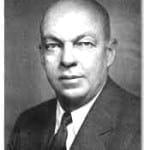
1918 — WWI Army officer and Columbia University engineering professor Edwin Armstrong patented his “Super Heterodyne Receiver.” Much of the device was based on of his experience as an Army Signal Officer. Armstrong is also known for creating the frequency modulation (FM) radio, among other notable benchmarks that provided the foundation for cell phones.
1920 — Both the Marconi company and Bell Laboratories document extensive testing in automobile-based telephones.
1921 — William Rutledge, Detroit police commissioner, becomes the first public safety official to use a radio-equipped vehicle. A huge moment and foreshadowing event for first responders.
1924 — Bell Labs announced the first two-way, voice-based radio system, giving birth to the cell phone.
1927 — The Federal Radio Commission is established.
1928 — Detroit Police commence regular one-way radio communication with patrol cars, paving the way for two-way communication.
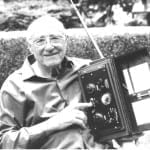
1937 — Donald Lewis Hings, a Canadian inventor, created a portable radio signaling system for his employer CM&S. He first called it a “packset.” Today we know it as the “walkie-talkie.”
1947 — Bell Laboratories demonstrated cellular radio “telephony” with call hand-off and frequency reuse.
1970 — Move over TV! The FCC approved a major allocation of spectrum specifically for mobile radio services.
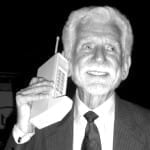
1973 — Text messages, selfies, and pure convenience can thank Martin Cooper. As a member of Motorola, Cooper is credited as the official inventor of the personal “handheld” cellular phone.
1983 — The Motorola DynaTAC 8000x mobile phone was made commercially available.
1985 — ”Spread Spectrum”, the technology of choice for commercial cellular was approved by the FCC.
1992 — 2 GHz (2G) of spectrum was reallocated by the FCC to make way for emerging digital mobile services.
1994 — Telecom giant Ericsson created the short distance data exchange technology known as “Bluetooth.”
1995 — Qualcomm commercially launched the first cellular system using digital CDMA technology.
2001 — 3G was launched by NTT DoCoMo in Japan.
2009 — 4G networks were implemented to help manage the demand placed on 3G networks.
2014 — Mobile phone subscriptions surpass 7 billion, marking a 100% penetration of the global population.
Well, there you have it! A quick walk through history. Wireless communication will continue to evolve, bringing new innovations to humanity.